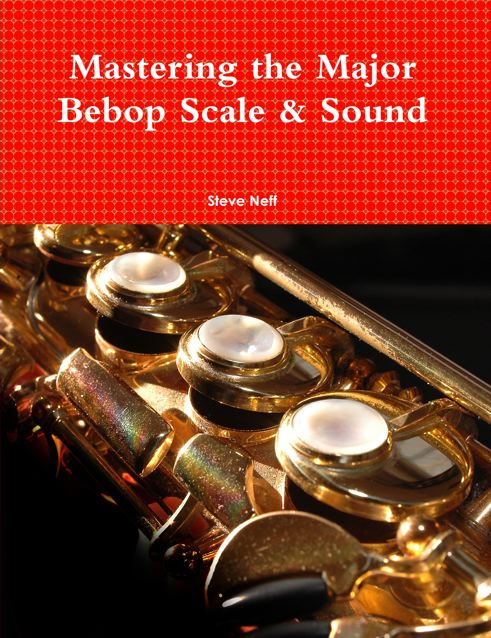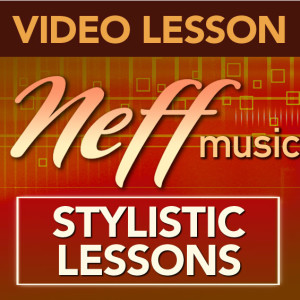Here’s a great tool that I made for my students years ago that I totally forgot about. It’s called the Chord Tone Cheat Sheet. I had a Skype student the other day that said he was looking for something like this on the internet but couldn’t find anything. As he was speaking, I had this feeling of deja vu like I had created something like this years ago. After a lot of searching on my hard drive I finally found it.
The Chord Tone Cheat Sheet is a PDF of all 12 notes and how they relate to each key by number. As a musician, it is incredibly helpful to know all the notes by their number in relationship to the tonic of the chord or key. The better that you know these numbers, the faster you can use all 12 notes of the chromatic scale in your improvisation and the easier it will be to communicate with other musicians. Knowing these numbers also allows you to understand chord symbols that much faster! For example, if you see a C7#11 chord you immediately will know that the #11 is an F#. If you see a Eb7b13 you will know there is a Cb in the chord, etc……Knowing these numbers and having a fast recall of them on your horn is essential to advancing as a jazz musician.
I mention on the PDF that the Chord Tone Cheat Sheet is only supposed to be used in emergency situations. This is just a subtle reminder to my younger students that the information on the PDF is supposed to be memorized and that just staring at the sheet and playing all the #9 from it is not doing them any good. Here are some ways that you can use this information to your benefit:
- You can cover up the right hand part of the sheet and just leave the key center numbers exposed on the left hand side. Quiz yourself on a set of numbers around the circle of fifths. You might choose #9s. So you see C and then say the #9 of D#. Then slide the page down to see if you are right if you aren’t sure. Then cover the page back up and try again on F which would be G# and continue on around the circle.
- Create 12 note cards with one of each of the 12 notes on them. Next, create another pile of 18 cards with one of each of the 18 numbers on this sheet on each card. So you will have a card with a 1, one with a 3, one with a 5, 7, 9, 11, 13, b9,#9, etc……. Turn both piles over so they are face down. Shuffle them up quite well but make sure you keep each pile separate. Then turn over a card from each pile and see how fast you can give the answer. The goal should be almost immediately but it might take a lot of practice to get there. When I do this with students, I turn over the cards and have them play the answer as fast as possible.
- The other thing you can do is practice running through a tune you know really well and for every chord of the tune you need to play a certain scale degree and then resolve it. So for example you can play through “All the Things You Are” with a play along track and practice playing all the 13th of each chord and then resolve it to the closest chord tone which would be the 5th or 7th. You can do that with all these notes #11, b3, b7, b13, b7 etc……. I like to have students figure out ways to resolve the notes as real life is about trying to resolve a line and make it sound good. (Once you can do that, feel free to break any rules you choose to and hold on to whatever tensions you want. You should learn to follow the rules before you can break the rules…..)
- A last exercise I have students practice is playing around the circle of fifths with one number. So I might choose #5 and then the student has to see how fast they can go around the circle playing the root and then the number so they would go CG# FC# BbF# EbB AbE etc……….We make a game out of it and I will have a stop watch going as they try. (If they make a mistake they have to start over though. I want them to go slow enough to play it perfectly while still trying to go faster. If your speed is causing more mistakes, you are going too fast……)
These are just a few ideas that you can use to work on knowing these chord tones and possible chord extensions. The better you know these the more possibilities you have while improvising. Instead of being trapped by playing just the 1,3,5 and 7 of each chord now you can choose any note that is available. With that freedom the door to greater creativity is propped wide open! Have fun! Steve
- I did take the lazy route of writing B#s as Cs and Cbs as Bs when I wrote this out. Technically, if you want to be true to the music theory gods you would want to say B# and Cb. (But if you’re mostly into jazz like I am……..who really cares as long as you are playing the intended note)
Neff Chord Tone Cheat Sheet PDF (Treble Clef)
Neff Chord Tone Cheat Sheet PDF (Bass Clef)



Steve, thanks for sharing. That s an amazing tool. I have been looking for it for long time. While I promise I’ll try not to cheat 🙂
Please let me know how much the mouthpiece and spanish boleros song in tones and lyrics.
David, I have no idea what you are asking about??